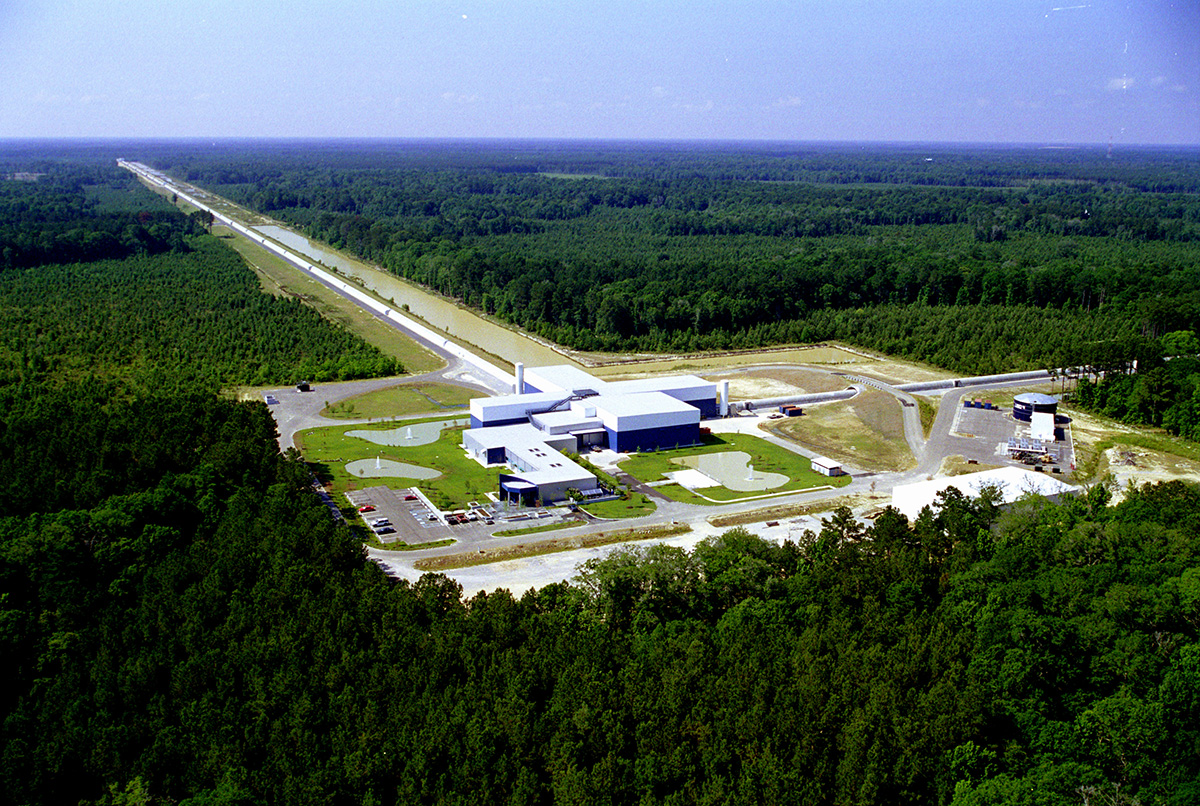The Laser Interferometer Gravitational-Wave Observatory (LIGO) is a large-scale physics experiment and observatory to detect cosmic gravitational waves and to develop gravitational-wave observations as an astronomical tool. Two large observatories were built in the United States with the aim of detecting gravitational waves by laser interferometry. These can detect a change in the 4 km mirror spacing of less than a ten-thousandth the charge diameter of a proton, equivalent to measuring the distance from Earth to Proxima Centauri (4.0208×1013km) with an accuracy smaller than the width of a human hair.
The initial LIGO observatories were funded by the National Science Foundation (NSF) and were conceived, built, and are operated by Caltech and MIT. They collected data from 2002 to 2010 but no gravitational waves were detected.
The Advanced LIGO Project to enhance the original LIGO detectors began in 2008 and continues to be supported by the NSF, with important contributions from the UK Science and Technology Facilities Council, the Max Planck Society of Germany, and the Australian Research Council. The improved detectors began operation in 2015. The detection of gravitational waves was reported in 2016 by the LIGO Scientific Collaboration (LSC) and the Virgo Collaboration with the international participation of scientists from several universities and research institutions. Scientists involved in the project and the analysis of the data for gravitational-wave astronomy are organized by the LSC, which includes more than 1000 scientists worldwide, as well as 440,000 active Einstein@Home users as of December 2016.
LIGO is the largest and most ambitious project ever funded by the NSF.
As of March 2018, LIGO has made six detections of gravitational waves, of which the first five were colliding black-hole pairs. The sixth detected event, on August 17, 2017, was the first detection of a collision of two neutron stars, which simultaneously produced optical signals detectable by conventional telescopes.
To learn more about gravitational waves and their detection go to https://www.ligo.caltech.edu




